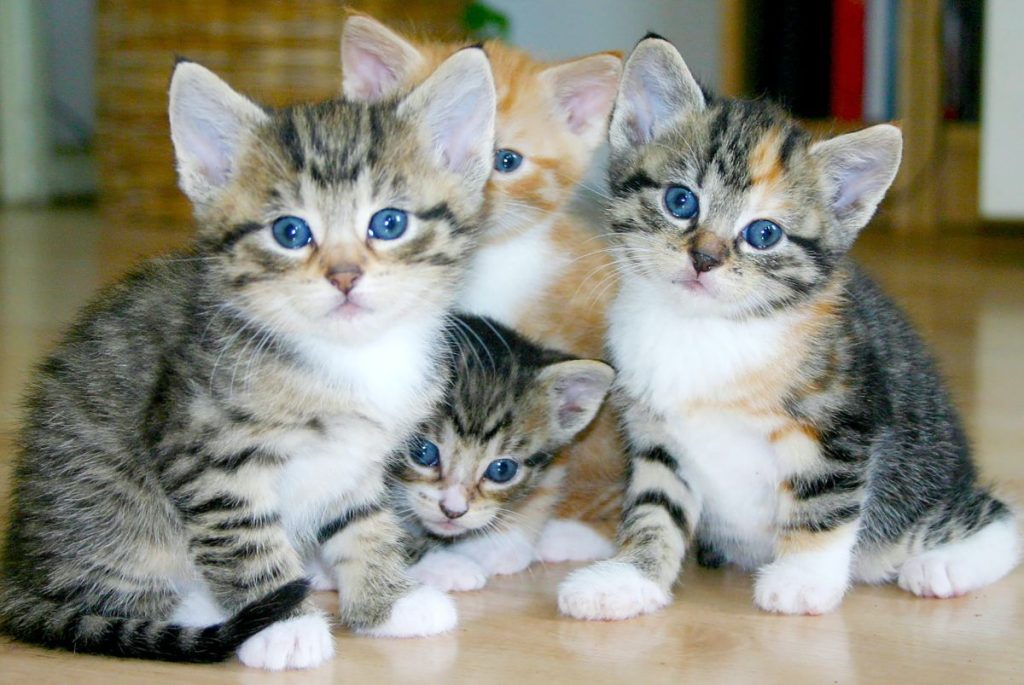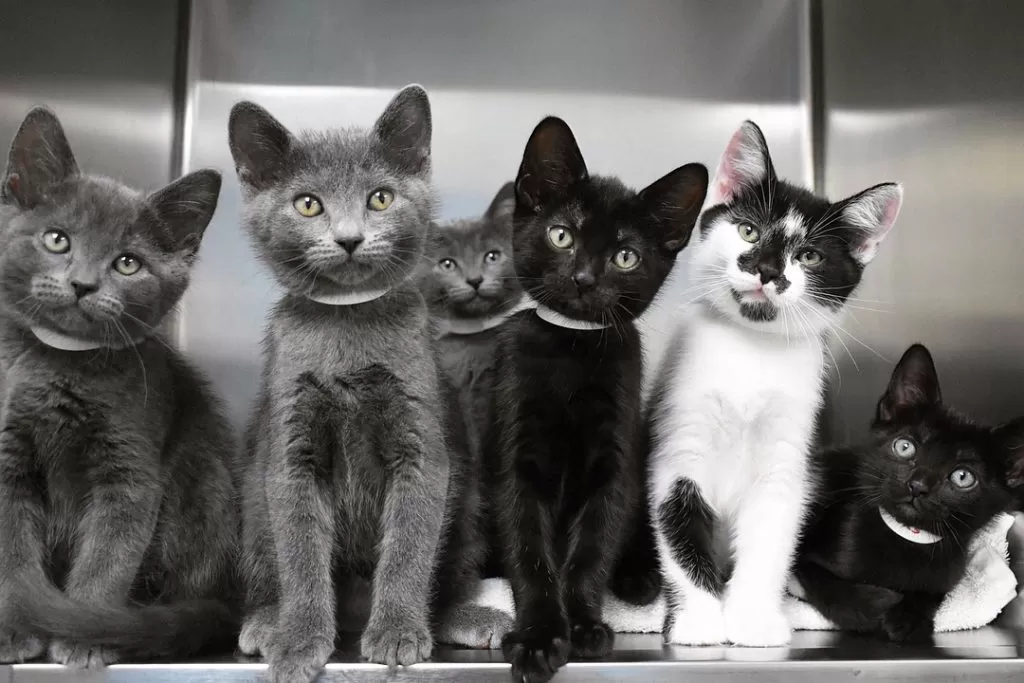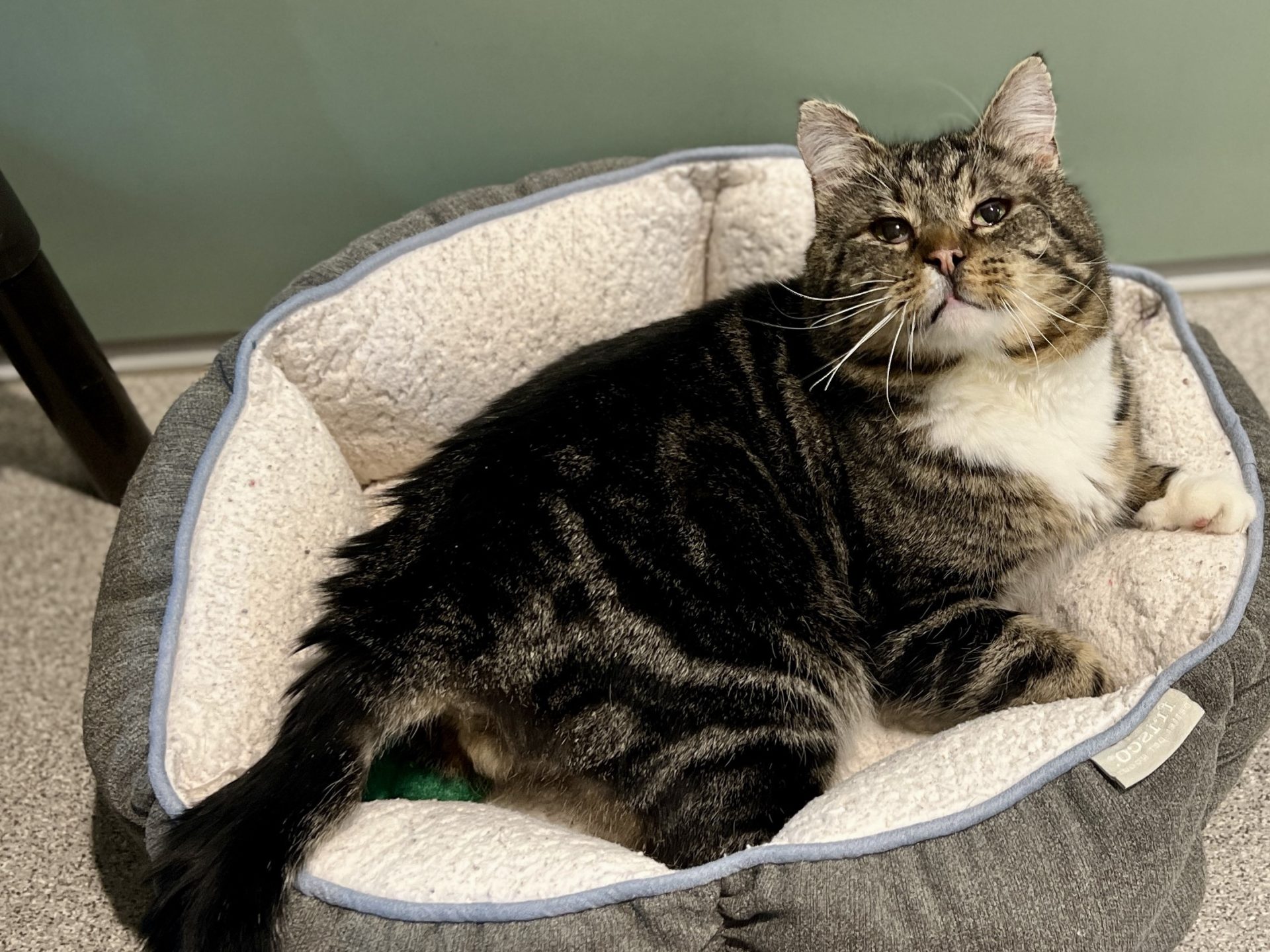Do More for Stray Cats & Kittens
Boris—an outgoing, grumpy-faced stray—came to Oregon Humane Society when a community member tending to him noticed his eyes were showing signs of a painful infection.
Donor support enabled Boris to get the care he needed—which included corrective surgery for entropion, a painful condition where the eyelid turns inward. After receiving top-tier care, Boris found a new loving home and became a beloved indoor cat and resident snuggler.
When stray cats come to our shelters in need of additional support, ranging from foster care for neonatal kittens to medical care like Boris’ corrective surgery, it is your generosity and support that helps provide them with everything they need to thrive!
The Experts Agree: Leave Them Be!
There is growing consensus among animal welfare experts—from the ASPCA, to Humane World for Animals, to Alley Cat Allies—that, in most cases, the best thing to do when you see a roaming cat or kitten is to leave them where you found them.
Gauge the Age
Kittens
Depending on the age of the kitten, human intervention may harm the kitten’s chances of survival.
Tip: Sprinkle flour around kittens to track mama cat’s paw prints. If no paw prints are seen within 6 hours, it may be time to intervene.

Under Two Months
Kittens under two months are still weaning and are best left with their mothers. Even if you don’t see a mother cat, she may be out getting food and will soon return.
If kittens seem sick, underweight, dehydrated, or are meowing in distress, contact OHS or an animal services agency in your county for guidance on how to help.

Two Months & Older
Kittens that are over two months are weaned and ready to be trapped, neutered, and find loving families. Get in touch with us to schedule an appointment or the animal services agency in the county where you found the kitten to learn what resources are available to you.
You can also provide the feline family with a water source, bowl of food, and access to shade.
Adult Cats: 12 Months & Older

Cat is Friendly & Social
Leave the cat where they are and check with neighbors to see if they recognize the cat. If you have no luck, trap them and bring them to a local vet to scan for a microchip.
If the cat is not microchipped, take photos of them to create flyers and post to online forums, like your local Facebook Lost/Found Pets group, Craigslist, or NextDoor.

Cat is NOT Friendly or Social
For cats who are not friendly or socialized around humans, we recommend contacting the Trap, Neuter, Return (TNR) group nearest you.
They may be able to provide you with a trap to catch the cat or colony, as well as provide spay/neuter surgery to prevent unwanted litters in the future.
Is the Cat Ill, Injured, or in Immediate Danger?
If you are safely able to, trap the cat and bring them to an emergency veterinary clinic, if they have capacity to help stray animals who need emergency medical care. Click here for a list of emergency veterinary clinics near you.
For cats in immediate danger, contact the county where the cat was found to see what animal control services are available.




